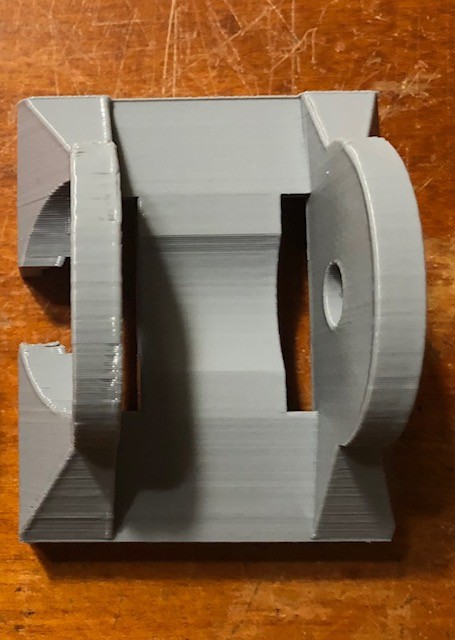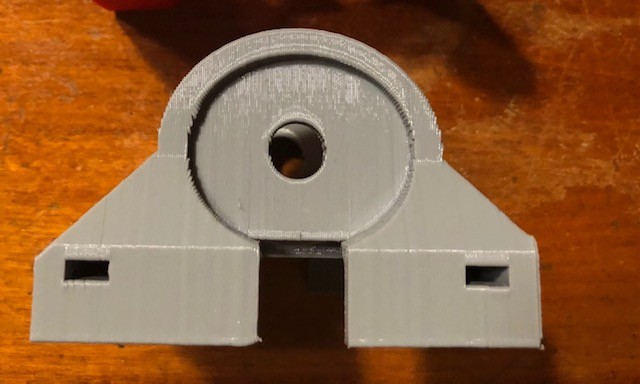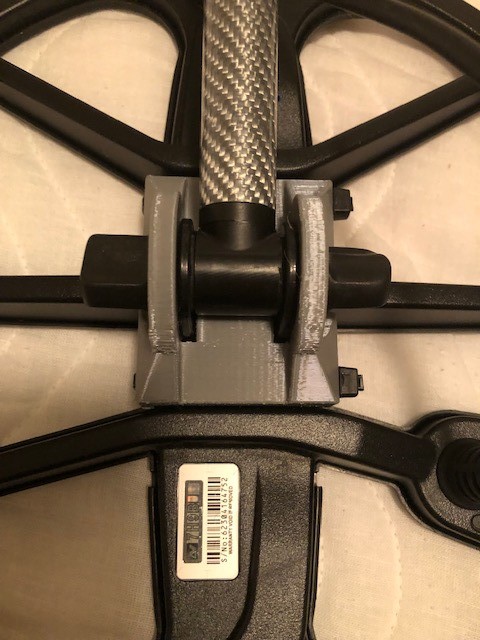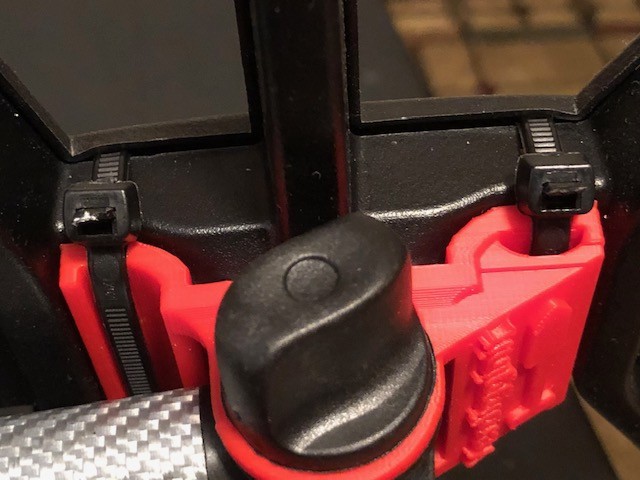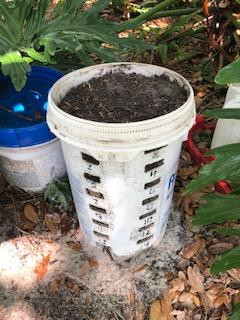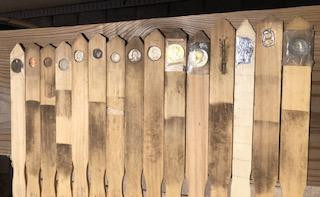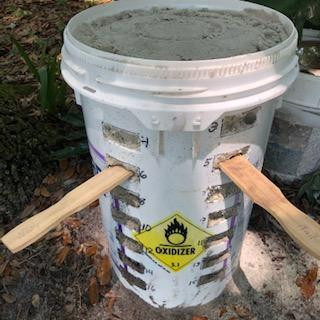-
Posts
591 -
Joined
-
Last visited
Content Type
Forums
Detector Prospector Home
Detector Database
Downloads
Everything posted by ColonelDan
-
I've used several designs for the Equinox and still experienced broken coil ears. However, I found a design I like much better and so far, it has worked fine. It is thicker, stronger and has a side plate that relieves the pressure on the ears through lateral movement. I also zip tie the coil stiffener to the coil so it is essentially a solid unit. That way, even if the ears broke, I'd still be in business. The stiffeners are made by Jim Struglia. His contact info: jstrugli@yahoo.com These stiffeners are not for the Coiltek coils.
-
Iceland. Mary and I were on a cruise. Beautiful place to visit but I'm happy we live in Florida! 😀
-
That question has been asked more than once and we're still awaiting an answer from the manufacturers.
-
Each of these methods are admirable and most of all, effective. When government supplied equipment didn’t measure up ( in this case Minelab supplied equipment) and soldiers took it upon themselves to make improvements, we referred to such fixes as coming from good old “GI Ingenuity” 😃 There’s always more than one route to the objective and you guys have clearly demonstrated that long held truth by applying good old GI Ingenuity.👍
-
Coil ear bracing has been the subject of numerous posts so I thought I'd add my approach. Yes, I've used several different designs of stiffeners and sad to say, my coil ears still cracked and I was out of business until I could replace the coil. Fortunately, those coils were still under warranty. My concern was finding a way to prevent this recurring after the warranty expired. The ultimate solution is, without doubt, for Minelab to field a redesigned coil ear that is a lot tougher than the current design. Failing that, the best approach in my opinion is to epoxy the stiffener to the coil making the stiffener, the coil and the ears one solid unit. Midalake has done this and as I see it, ensures a solid repair. My concern with this approach would be two fold. One, would that void whatever warranty remains and two, if the coil is sent to Minelab for replacement, there goes the stiffener. I wanted a method by which I could attach the stiffener to the coil, be able to remove it if necessary and still use the coil cover. mn90403 has done this as shown on another post within this forum by using zip ties. A workable approach but his method shows the zip ties over the coil cover so you couldn't remove the cover to clean the coil without cutting the ties. Having said that, his system will work as he intended. I thought I'd share my approach which I've found to be simple yet effective in accomplishing my goals. The key is making the ear stiffener one with the coil so even if the ears snap, the stiffener holds the coil and shaft in place. I decided to use zip ties but in a somewhat different way than mn90403. I wanted the stiffener to be solidly attached and still be able to remove and replace the skid plate. I threaded the zip tie through and around the stiffener and bare coil without the skid plate attached. I then installed the skid plate over the coil as before covering the zip ties. The skid plate remains in place, the stiffener is solidly attached to the coil and there is no modification to the coil which risks voiding the warranty and if I have to return the coil, I can save the stiffener. Bottom line; with this approach, even if the ears break, I'm still in business. It works for me....
-
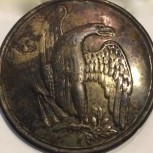
A Test Garden Idea For Beach Hunters
ColonelDan replied to ColonelDan's topic in Metal Detecting For Jewelry
Joe D, Great ideas for improving this set up! Love it. -
I’ve used Herke’s cuff for several years and found them to be top notch. http://www.stevesdetectorrods.com/product.php?id=EQACC-05
-

A Test Garden Idea For Beach Hunters
ColonelDan replied to ColonelDan's topic in Metal Detecting For Jewelry
First and foremost, I want to thank you all for those most kind comments Just FYI....I've been using my version of a "test garden" for a number of years now and it's proven very useful as well as extremely convenient for my purposes. The first thing I did after bringing the sand and soil home was to spread a tarp on an area that was target free and scan all of the sand and soil for unwanted items that would bias my testing. When not in use, I cover the buckets with their factory lids. The sea water is kept in sealed jugs so it too remains uncontaminated. Thanks again for the comments.... -
99% of my detecting is done on central Florida beaches. Since it’s impossible to establish a well stocked test garden at a public beach, I sorta brought the beach home with me and developed my own private beach garden! I cut slots in two large empty chlorine tablet buckets at various depths as shown from 2 -16 inches. I then filled one with New Smyrna Beach sand and the other with soil...for the few times I land hunt around here. I embedded numerous examples of ferrous and non ferrous targets into paint stirring sticks. I also have several blank sticks I use for gold and silver jewelry as well as artifacts that I don’t want permanently attached to a stick. I then insert the target(s) in the slots, each at its desired depth, and start scanning. This allows me to rapidly change the targets, depth and relative position of each. I can now test for sensitivity at depth as well as separation of ferrous and non-ferrous targets in a variety of scenarios using actual beach sand where I do my detecting. If I want to test in wet salt sand, I just soak the bucket sand with authentic sea water that I also brought home from New Smyrna Beach...and the Atlantic Ocean never even missed it. 😉 Works for me.....
-
I had something similar happen in the heat of a Florida summer a few years ago. I had a full protective cover over the control box. After I removed it, the EQX cooled down and returned to normal. Since then, I cut the back out of the cover to expose the vents in the back of the control box and haven't had a problem since....and all my hunting is in Florida year round.
-

Ctx3030 With The 17inch Coil Vs Sdc2300 In Saltwater
ColonelDan replied to PPP's topic in Minelab Metal Detectors
99.9% of my hunting is and has been done on saltwater beaches for many years...to include shallow water. Over those years, I've used the CTX, Excal, EQX 800, XP Deus and a PI. Bottom line: The PI drove me crazy digging the deep trash that one finds all over the beach and the selectable frequency Deus is not a true beach machine compared to mutli frequency Minelabs . I'll stick with the CTX or EQX for dry, wet and shallow water and the Excal for deeper hunting...regardless of coil size. Just the view from my beachy foxhole....YMMV -
😃 Congratulations
-

Waterproof Headphones: Minelab Yellow Or Pelsos?
ColonelDan replied to nickelNdimed's topic in Minelab Equinox Forum
I agree with Chase. I have both and the Pelsos are much better in every regard. -
Andy is a great resource for learning the world of metal detecting for sure. But what I learned over the years is Pre-determined settings serve only to get you in the ballpark. It’s up to you to pick the best seat. Any array of settings is highly dependent on the environment in which you're hunting. Soil composition, level of moisture, mineralization, target composition and attitude in the soil, presence of EMI and so on. Andy's settings are a great place to start but you should adjust those settings to meet your environment if you want to unleash your detectors full capability....in other words, it's up to you to pick the "best seat" after Andy gets you in the ball park. 😉 Just the view from my foxhole...
-
I wondered about this awhile back so I tested my two EQX800s in my test garden. I set them up exactly the same, noise canceled each and kept them apart so they would not interfere with each other. The results; they performed exactly the same ...which actually surprised me somewhat. I expected some small degree of variance but that wasn't the case with my two. 👍
-

Equinox Wireless Technology Poll
ColonelDan replied to Steve Herschbach's topic in Minelab Equinox Forum
Since getting the Quest headphones, I've used nothing else. -
F2 exclusively on Florida beaches. Works well.
-
I've seen some dry spells in my time but a combination of COVID fears, extensive renourishment and recent temperatures in the 40' - 60's have resulted in 2020 being one of the worst dry spells in memory. The depositors just aren't flocking to our beaches in normal numbers. I haven't been down south or on the west coast of FL recently, but if your interested in detecting from Jacksonville to the Treasure Coast, I can tell you my experience has been one of a lot more exercise than any significant detecting success. Praying for an improvement in 2021.
-
I use the Quest headphones. So far they have have been great. https://www.questmetaldetectors.com/product-page/aptx-low-latency-bluetooth-wireless-headphones-for-minelab-equinox
-
Were I in your shoes, I would get him the Equinox 800. It's as simple as you want it to be right out of the box and he can grow into it as he gains confidence and knowledge of its capabilities. He can then tweak it to enhance/realize its potential. It's a great machine for either beginner or advanced detectorist.
-

Musketball Fest Florida East Coast
ColonelDan replied to FloridaSon's topic in Minelab Equinox Forum
Good job soldier....👍 -
Steve and FloridaSon are on target. Gold will continue to sink in the sand until some denser, compact layer or obstacle stops it. If it doesn’t hit hard pack, it will definitely sink out of detector range. That factor is why we watch and hope for serious erosion...especially along the treasure coast. Once heavy tides have stripped away multiple layers of sand, previously undiscovered goodies can appear.
-
Thanks to all for the good ideas!
-
Good idea!


